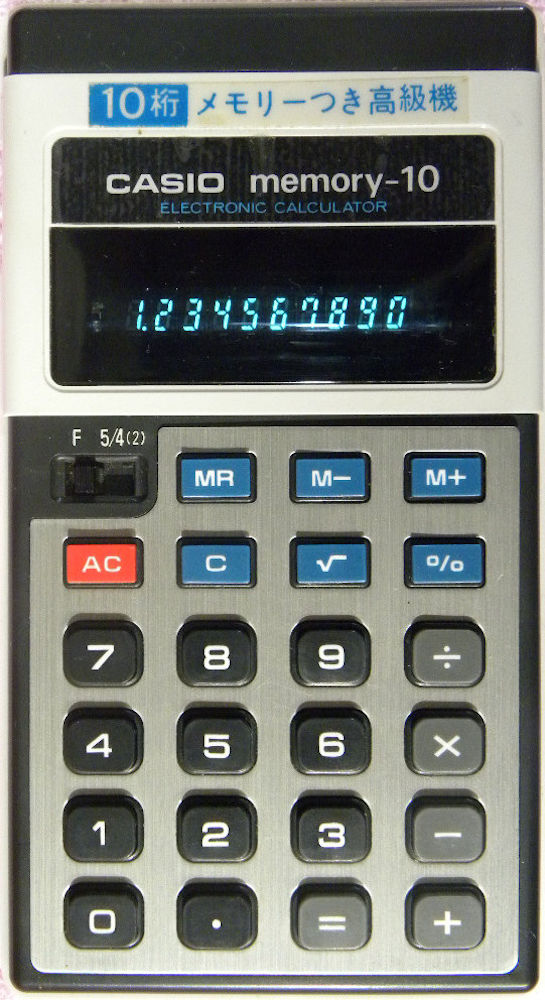CASIO: H1010 |
|||

| DUDEK Emil: Case: The case is three-piece smooth plastic with a white base and black and white front. A white blue and black printed label sit in its own recess on the top panel. The neutral display filter is flat and slightly recessed and gives a clean bright image. The typical Casio keys are squishy but work well. They keys are surrounded by a brushed aluminum panel which sits in its own recess with black plastic escutcheons for each key. There is a front switch for floating / 2 decimal rounded display. Comments: Solid slab shaped calculator that is slightly different from the normal Casio design but maintains a lot of the familiar features. The display is rather small to accommodate the ten digits. The logic is quite poor with no recovery, negative square roots and limited negative numbers. The original case is soft black plastic with an open top and subtle curves on the front and rear edges. It has Casio embossed on the front and Made in Japan on the back. Very similar in design to the Casio Memory-8A Boards: The keyboard assembly (10W-E4B) is attached to the front with 6 screws. It links to the main board (10W-1B) via 13 strong wires. There is a small transformer board that piggy-backs on the main board. Construction: Remove the screw from within the battery compartment and the back lifts off easily - hinge from the bottom as there are two lugs there. Logic comments: The [C] key is used to cancel an entry whilst the (AC) key clears the whole calculator. Input overflow is suppressed inputting an eleventh digit is ignored. Negative numbers are shown with a ‘-‘ in the immediate left digit but as there is no eleventh digit you are limited to seven digit negative numbers. There is an selectable constant on all multiply and divide only by double-hitting the operator; i.e. [3][X][X][=] gives ‘9’, [=] gives ’27’ though squares can be performed by keying in [3][X][=] to give ‘9’ Negative square roots are allowed and result in a negative number. Divide by zero shows ‘E’ in the far right (first) digit and is not recoverable. Overflow shows just ‘E’ in the far right (first) digit and is not recoverable. Memory storage is not indicated – you have to remember it and [AC] clears the memory too. You can switch between full floating (F) and two digit round down notation. No other bugs found. |